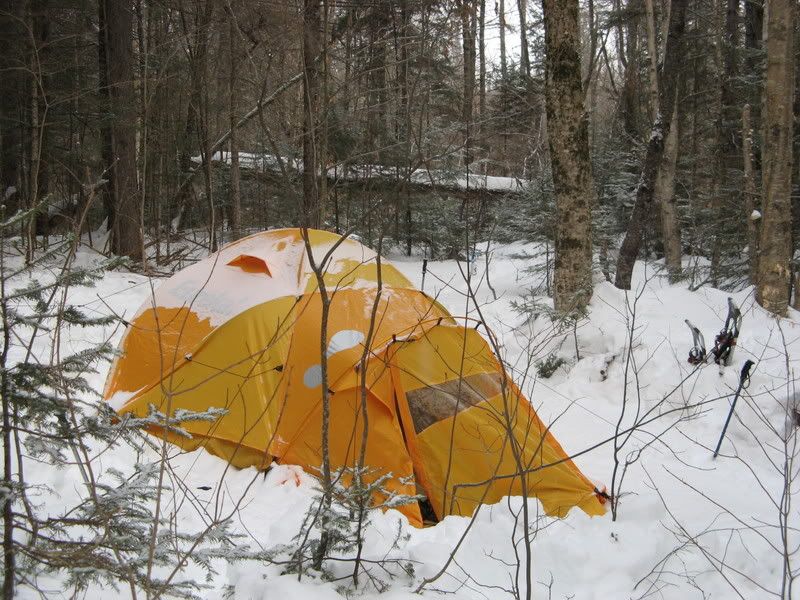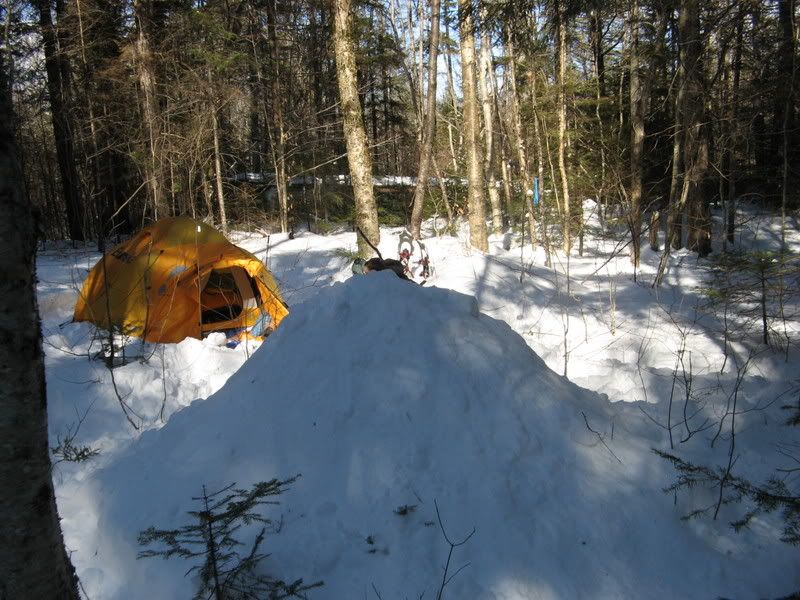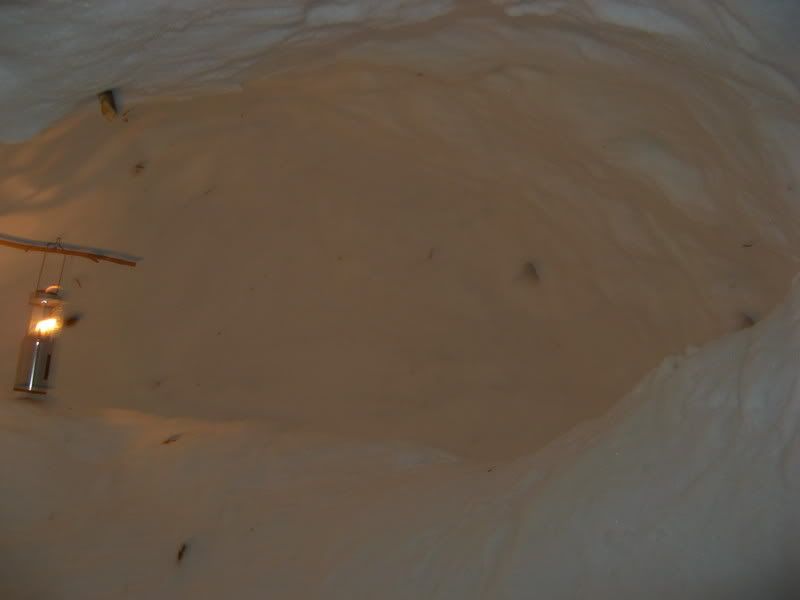Topic
Winter Camping Newbie
Forum Posting
A Membership is required to post in the forums. Login or become a member to post in the member forums!
Home › Forums › General Forums › Winter Hiking › Winter Camping Newbie
- This topic is empty.
-
AuthorPosts
-
Feb 16, 2007 at 8:20 am #1378784
Sounds like you have plenty of clothes. Have fun. If you really want a workhorse stove to melt snow, boil water, try the MSR Dragonfly. Here's the board for your next hike to Tuckerman's!
http://www.venturesnowboards.com "The Divide"Feb 16, 2007 at 11:53 am #1378835>> I learned from others at this site, that canisters (coleman xponent)take in heat from the surrounding air and should not be covered or insulated when they are in use.
I have read similar things here and elsewhere, but it doesn't make much sense to me. Sure, you have to be careful when using any type of covering or insulation on a canister so that the canister doesn't overheat and possibly explode. I have never heard of this actually happening, but the lawyers make the companies say it none the less. However, in sub-freezing temps, the least of your worries when using a canister is overheating it. You have to keep the canister above freezing, or else the butane will not boil off, leaving you with a nonfunctional canister that is still 70% full. You are correct, as the gas in the cannister expands and boils, it absorbs heat from whatever is around it, but it doesn't matter if it's air, your jacket, or you. The canister doesn't care. Just keep it above freezing any way you can.
Feb 16, 2007 at 12:04 pm #1378837>> Also, beware the Jetboil as a snow-melting machine.
You are correct that the Jetboil is not an ideal snow melting stove, although it does a little better with the GCS pot. However, I have found that a Jetboil is a better choice for me unless the temperature is going so low that I don't think I can keep the canister somewhat warm. Allow me to explain. We all know that in winter time is always short. You have many tasks to accomplish, and not very much time to do it. You have to establish your shelter, manage your clothing layers and keep your pack contents and yourself dry, all while managing your normal camp tasks. Add to this frozen fingers and generally less motivation in the cold (at least for me), and the Jetboil starts to look a little better. All the parts are contained, so no digging through your pack for your fuel bottle, burner, pot and lid, spork, etc. No priming and pumping and hassle to get the burner lit. No need to establish a kitchen area where you can sit and cook (many times on winter hikes I'll brew up on a short rest break). Just pull out the Jetboil pot, remove burner and canister assembly and spork, press a button, and your snow is melting. Plus, you can hold and carry the Jetboil while in operation, allowing you to manage other tasks as well. All these small tasks may seem pretty trivial, but I've found that when it's really cold, they add up. And if melting water or cooking is too much of a chore, I'll usually end up going to bed without. That's why the Jetboil works for me, even in the winter.
Feb 16, 2007 at 2:14 pm #1378860James,
Your comments are mostly when you talk about canisters. However, the issue at hand is NOT safety, it's that the "boiling" is an endothermic reaction (like you said, it will simply draw "heat" from whatever is around it in order to accomplis this task.
However, above freezing or below freezing temps has NOTHING to do with it (other than, at some point you go below the boiling point of butane) the fuel mixture will still draw heat from the surrounding air (admittedly, there's not a lot to draw on, but there is still some… which is why performance is reduced, there's not enough thermal energy for it to draw fast enough to vaporize fuel very quickly). Insulating the canister retards it's ability to draw ANY "heat" from the surrounding environment, that is why insulating a canister is a BAD idea in cold weather.
Insulating the canister will never "warm the canister up"… it won't take but mere moments to use up all the thermal energy stored inside the insulation.
Canisters NEVER, EVER, EVER overheat on their own regardless of insulation (or unless you are in crazy hot environments… then maybe you might have a problem)… the only time you risk overheating a canister is if you contain canister AND stove in an insulated environment. However, insulating the canister ITSELF will not result in this.
As some have mentioned, a (somewhat) good idea is placing your hands on the canister as it will allow the canister to draw heat from your body… however, you risk chilling your hands. Another idea that had been bandied around is tossing one of those thermal heat packs inside the insulating of the canister… that would work as long as the heat pack had energy to impart.
Realize, the "boiling" point of butane happens to be -0.54 Deg C (just below the freezing point of water), so yes, it is imperative to keep the canister above freezing… however insulation will NOT accomplish this.
Feb 16, 2007 at 2:46 pm #1378868First off, lets review: No one said anything about wrapping a canister in insulation. The two suggestions related to the canisters in this thread were: 1) Insulate the canister from the ground, and 2) Hold the canister between your thighs while cooking.
>> However, above freezing or below freezing temps has NOTHING to do with it (other than, at some point you go below the boiling point of butane)
In a theoretical sense you're correct. In a "I'm thirsty because my stove won't work and now I'm cold and dehydrated" sense, you are a little off. Keep in mind, the discussion at hand is actively warming the canister, or preventing the loss of heat from the canister to the ground, not wrapping the canister in neoprene and hoping it will warm up by itself.
>> Insulating the canister retards it's ability to draw ANY "heat" from the surrounding environment, that is why insulating a canister is a BAD idea in cold weather.
Unless the temperature of the canister is higher than than the ambient air temps (such as if the insulation is being warmed). Then insulation will allow the canister to use it's stored heat energy to accomplish the boiling of fuel, instead of losing it to the ambient environment.
>> Insulating the canister will never "warm the canister up"… it won't take but mere moments to use up all the thermal energy stored inside the insulation.
Unless, of course, the insulation is being (or has been) warmed by your body heat and is a higher temperature than the ambient air, which is what we are discussing at the present time.
>> As some have mentioned, a (somewhat) good idea is placing your hands on the canister as it will allow the canister to draw heat from your body… however, you risk chilling your hands.
Actually, what I said was that I put the canister between my thighs, allowing the large amounts of warm blood (and energy) flowing through my femoral arteries to warm the canister. Then, I can warm my hands on the insulated cup, utilizing the excess energy of the burning fuel. My hands aren't chilled, they're warmer.
>> Realize, the "boiling" point of butane happens to be -0.54 Deg C (just below the freezing point of water)
I obviously do realize this, as I said it in the post that is the subject of this discussion.
>> so yes, it is imperative to keep the canister above freezing… however insulation will NOT accomplish this.
I'm glad then that no one (or at least not me) said that it would.
Feb 19, 2007 at 2:00 pm #1379212looks like some jetboil conversation kept you guys busy while I was away! I'm happy to report that I had no problems with my jetboil in the field, even this morning when temps dipped to 0°F. I used roughly 1 to 1 and a half bottle of jetfuel. I will say that maintaining enough drinking AND cooking water is quite a chore and I think I would probably look into getting closer to a drinkable stream, or getting a white gas stove which I could set and not worry about keeping warm.
All in all we had a blast on the trip. The suggestion about keeping distances to be hiked low were very spot on as we found it really tough going. It wasn't nearly as bad on day 2 after a couple groups of hikers passed by the camp and packed out the remainder of the trail for us.
I have to again thank everyone for their tips and suggestions. Some of them proved to be quite helpful out there. Here are a few pics from my trip in case anyone is interested.
Tent Covered in light snow on Sunday morning

snow shelter mound

snow shelter completed

a few more here if anyone wants: Camping trip feb 2007
Feb 19, 2007 at 2:52 pm #1379219Glad you had a good time. Winter camping in many ways is a challenge, but it can also be the most rewarding as well. I also like your snow shelter, looks pretty cozy! Next time you may want to smooth the ceiling a little more, or else water will drip from all of the little peaks when it melts from body warmth.
-
AuthorPosts
- You must be logged in to reply to this topic.
Forum Posting
A Membership is required to post in the forums. Login or become a member to post in the member forums!
Our Community Posts are Moderated
Backpacking Light community posts are moderated and here to foster helpful and positive discussions about lightweight backpacking. Please be mindful of our values and boundaries and review our Community Guidelines prior to posting.
Get the Newsletter
Gear Research & Discovery Tools
- Browse our curated Gear Shop
- See the latest Gear Deals and Sales
- Our Recommendations
- Search for Gear on Sale with the Gear Finder
- Used Gear Swap
- Member Gear Reviews and BPL Gear Review Articles
- Browse by Gear Type or Brand.





